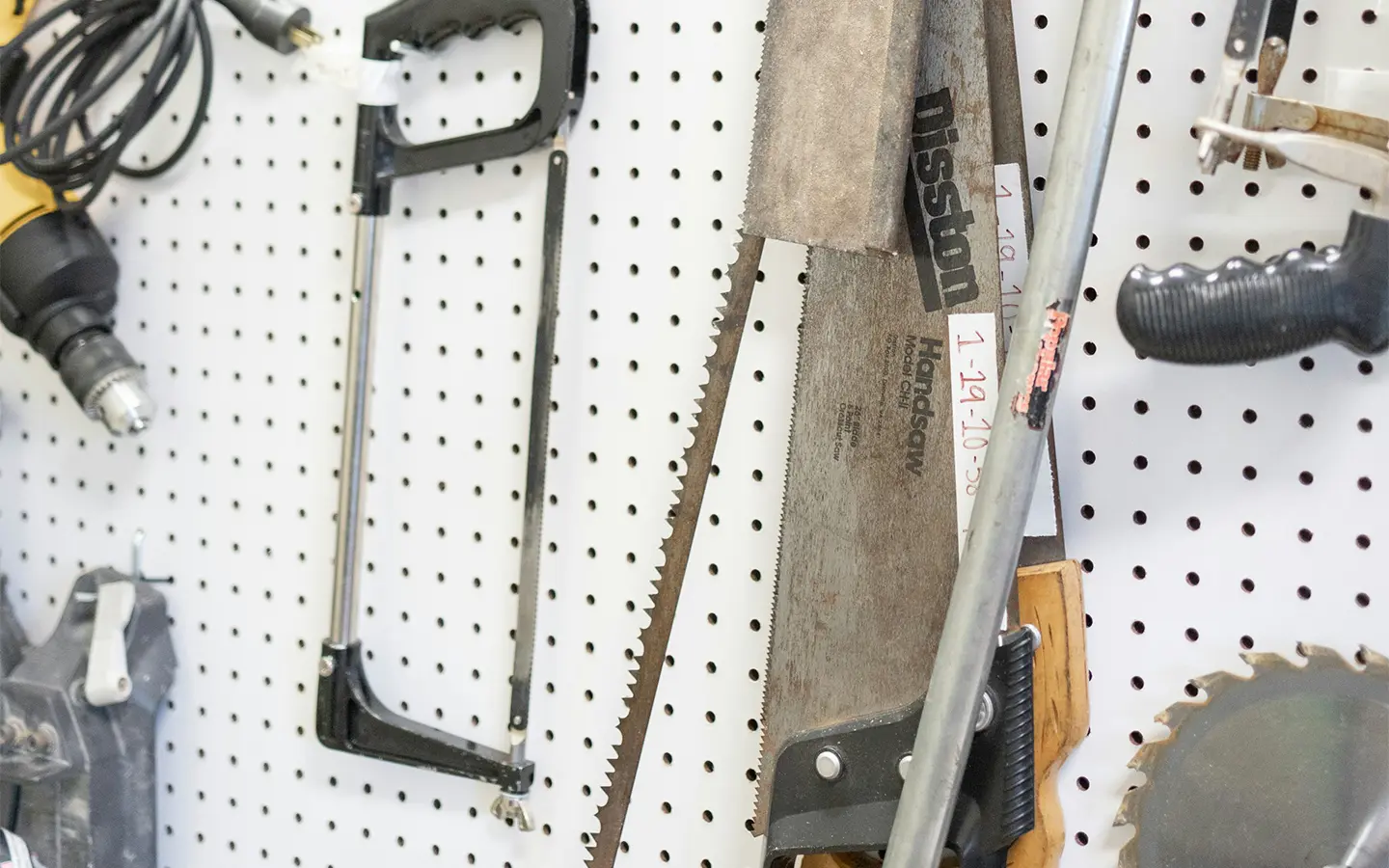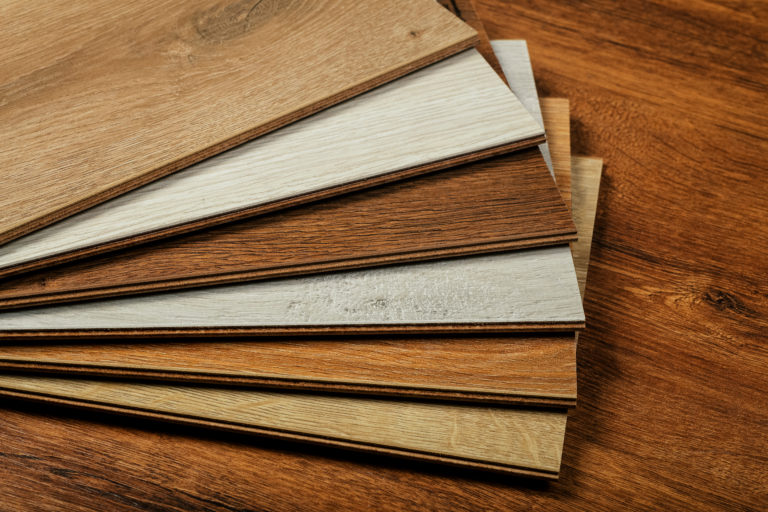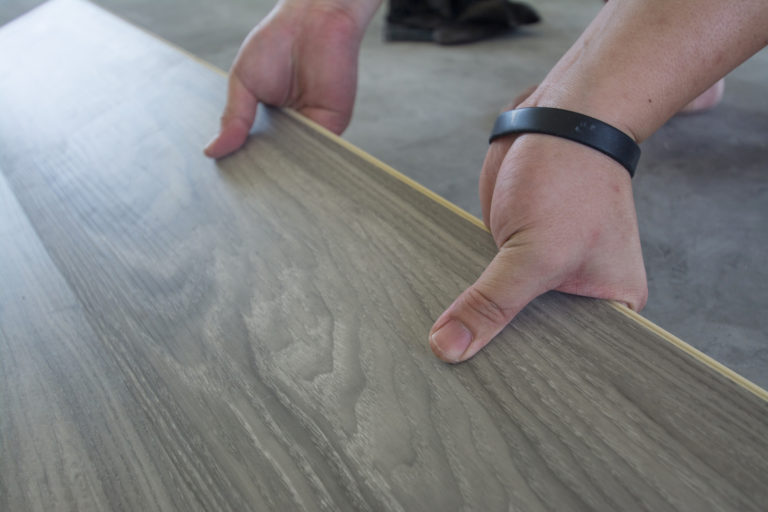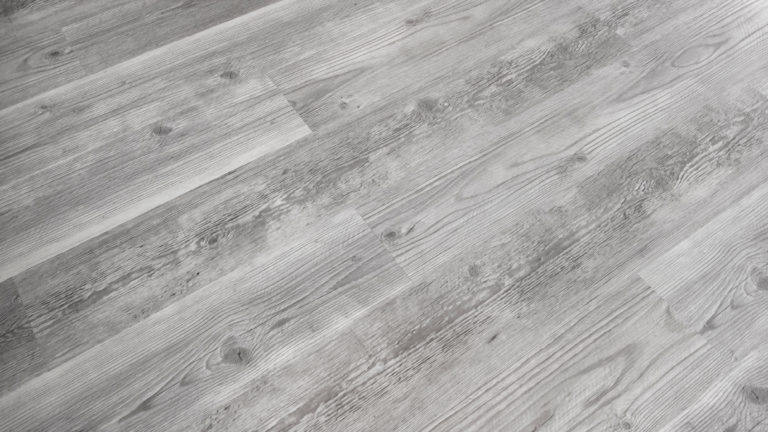Introduction
Having the right tools to cut vinyl plank flooring is essential for a successful DIY installation project. We break down the most effective options, helping you choose what best suits your project, budget, and your comfort level.
Whether you’re a seasoned DIY pro or a beginner, understanding the strengths of each tool will set you up for success.
For more detailed information on how to cut vinyl plank flooring, be sure to check out our comprehensive step-by-step guide.
Choosing the Right Cutting Tool for LVP
Before choosing the cutting tool for your project, consider:
- Project size: For larger areas, prioritize tools that enable faster, more efficient cutting (e.g., circular saw). Smaller projects can be tackled with manual tools or more specialized options (e.g., utility knife, vinyl plank cutter).
- Comfort level: Choose a tool you’re comfortable handling for better control and safety. If you’re new to DIY projects, a utility knife or vinyl plank cutter might be a good starting point.
- Budget: Consider the upfront cost of the tool and whether it aligns with your project needs. Renting a tool might be more cost-effective for a one-time project compared to purchasing it.
The Best Tools to Cut Vinyl Plank Flooring
Here’s a list of the most effective tools to cut vinyl plank flooring. These tools produce clean cuts and ensure a stress-free project! While each works well on its own, combining them can help you achieve the perfect results.
1. Utility Knife
A good utility knife is a surprisingly powerful LVP cutting tool.
For clean cuts, ensure a sharp blade and focus on scoring the top layer without cutting through the entire plank. Then carefully snap the plank along the scored line. To achieve a straight cut after scoring, use a straight edge as a guide when snapping the plank.
Utility knives are great for beginners or those tackling smaller projects due to their simplicity and low cost. Ensure a sharp blade for clean scoring, and consider getting a retractable blade model for added safety.
2. Vinyl Plank Cutter
These specialized tools offer a cleaner, faster cut than utility knives, especially for larger projects. They utilize a lever system with a sharp blade, allowing you to slice through LVP with minimal effort. Vinyl plank cutters offer a safe, dust-free, and quiet solution.
Keep in mind they’re primarily for straight cuts, but if your project involves many repetitive straight cuts, the speed and precision they offer make them a valuable investment.
Best Brands of 2024
3. Oscillating Multi-Tool
For detailed cuts, plunge cuts (starting a cut mid-plank), or trimming around door frames and other obstacles, an oscillating multi-tool is your best friend.
Its rapid back-and-forth blade motion provides unmatched precision. Always choose a blade specifically designed for wood and plastics, and let the tool do the work – excessive pressure can cause the vinyl to melt.
While not the fastest tool for long, straight cuts, its versatility for intricate work makes it a valuable addition to your DIY arsenal.
4. Jigsaw
If your project involves curves, angles, or other intricate shapes, a jigsaw is essential.
Choose a fine-toothed blade made for plastics to minimize chipping, and maintain a light touch and steady hand for the cleanest results. Jigsaws can even tackle straight cuts, particularly if it’s the only power tool you own.
For optimal control, consider clamping your LVP to a workbench or using a jigsaw guide.
5. Circular Saw
For large projects where efficiency is key, a circular saw ensures quick and accurate straight cuts across multiple planks.
Always prioritize safety with eye and ear protection due to dust and noise. Choose a fine-toothed blade for a smooth finish on your LVP.
For the cleanest cuts, score your line lightly with a utility knife before cutting with the circular saw, and consider cutting outdoors to minimize indoor mess.
6. Miter Saw
While primarily known for angled cuts, miter saws offer significant advantages for LVP projects that demand precision.
If your installation involves fitting planks around doorways, built-in furniture, or other obstacles, a miter saw ensures clean, accurate cuts for a seamless, professional finish. They’re also ideal for LVP layouts with multiple angles or intricate joinery.
As with other power saws, always equip your miter saw with a fine-toothed blade designed for plastics to prevent chipping or damage.
For those tackling a full room renovation, investing in a miter saw can save the expense of purchasing or renting a circular saw for the larger flooring cuts.
Conclusion
There’s no single “best” tool for cutting LVP. Consider factors like project size, your comfort with power tools, and budget when making your decision.
Practice is key, so try each tool on scrap pieces before starting your project. Remember, safety first! Read instructions carefully and use appropriate protective gear.
With the right tools and know-how, you’ll achieve the beautiful flooring you envision. If you’re still in the research phase and haven’t selected your flooring yet, be sure to check our guide on buying LVP flooring for expert advice.
About The Author

Courtney Daily
March 11, 2024
Courtney is a freelance writer who wears many other hats: kindergarten teacher by day, Broadway diva in the shower. She is a transplant Hoosier who originated in New England. When she isn't writing in her spare time, you will find her reading history books, arguing with her latest knitting project, or being beaten by her kids at most games.




